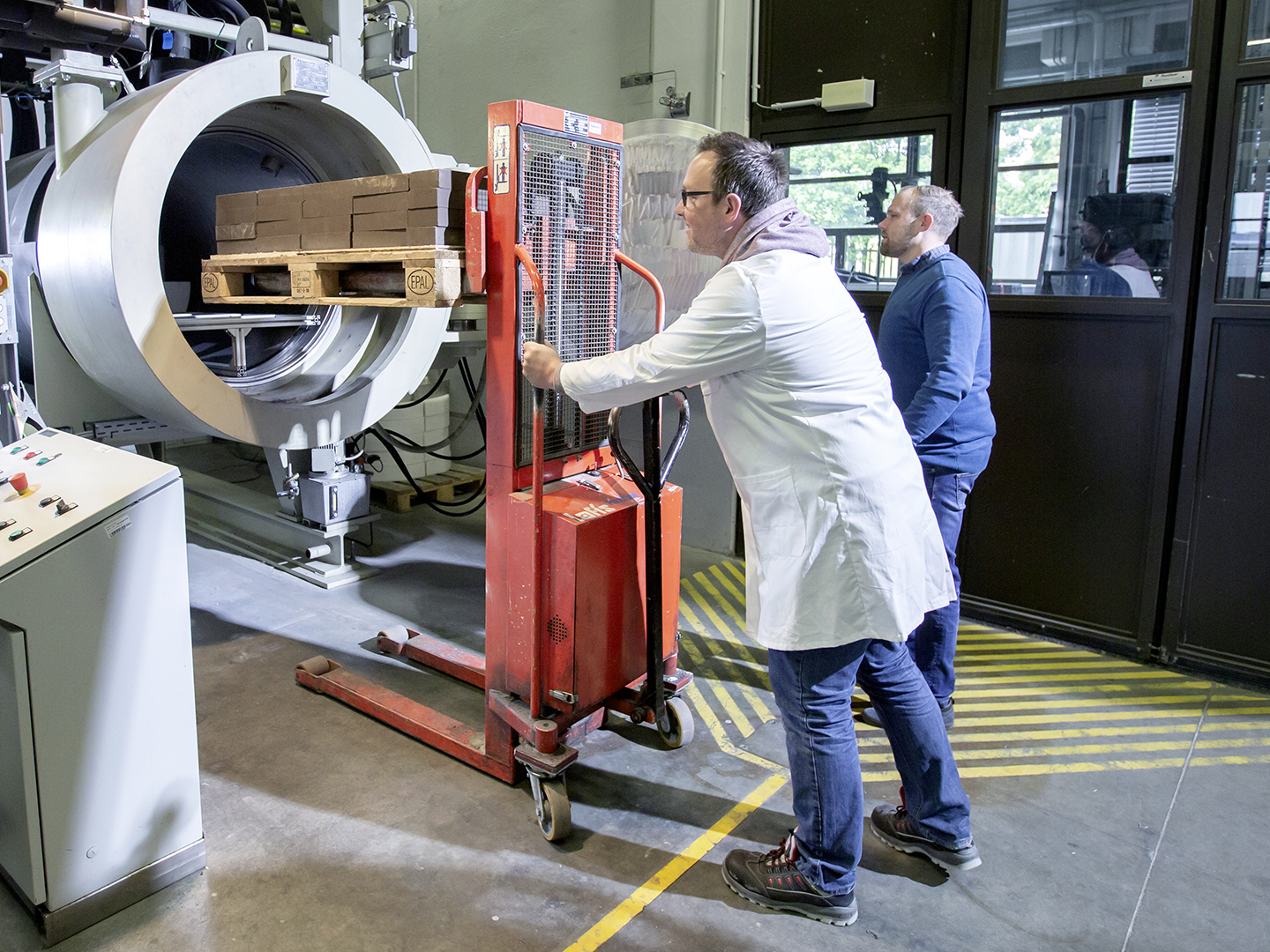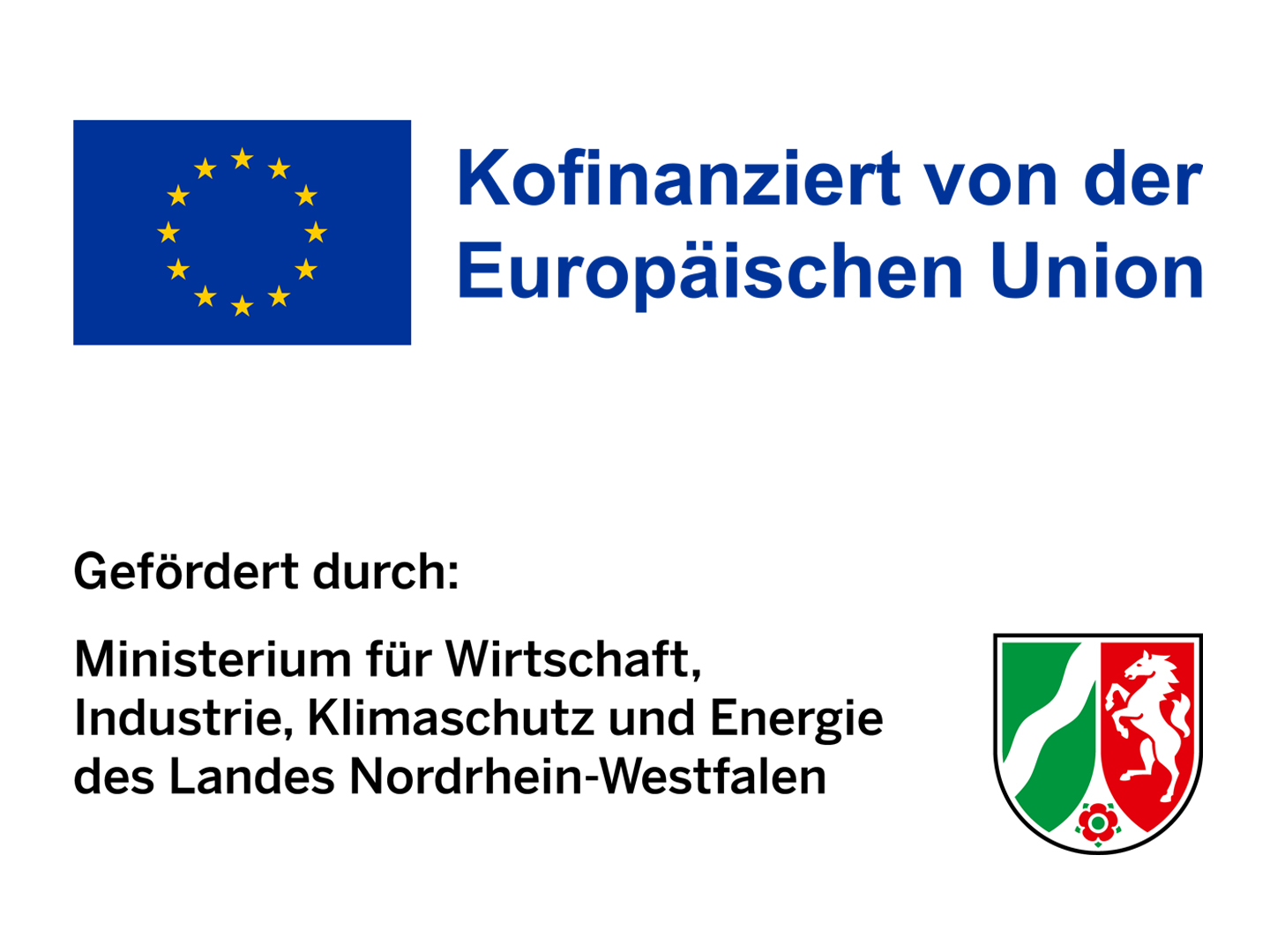ZEROES
Reducing CO2 emissions with climate-positive building materials
The construction industry and the operation of buildings are responsible for 36% of global energy consumption and 39% of energy-related CO2 emissions. At the same time, the housing market is tight, especially in large cities, and there is a lack of affordable and climate-neutral housing. Sustainable and affordable building materials are therefore more in demand than ever. This is where the "ZEROES" project comes in: The project partners Betonwerk Büscher, Rohstoffbauwerke and project management Fraunhofer UMSICHT are pursuing the goal of reducing CO2 emissions in the production of mineral building materials. A central approach is the use of carbonates as binders or fillers in concrete and sand-lime bricks. The project partners met on July 3, 2024 for the official kick-off at Fraunhofer UMSICHT in Oberhausen.


One of the main reasons for the high CO2 emissions in the construction industry is the energy-intensive production of mineral binders. Every year, around 40 billion tons of sand and gravel are used worldwide to produce mineral building materials. The most commonly used binder here is cement, which is the most widely used building material worldwide for flowable concrete - indispensable for foundations and ceilings in residential construction.
In the "ZEROES" project, the project partners are pursuing the goal of using carbonates as binders or fillers in concrete and sand-lime bricks. Carbonisates are carbon-rich materials that are produced through the thermochemical conversion of biomass. When they are bound and stored in building materials, no CO2 is released into the atmosphere, which means that emissions from energy-intensive production can be offset at the same time. Another key requirement of the project is that all the mineral materials required must be obtained from recycled construction waste.
Strengthening NRW as an industrial location in the environmental sector
In order to compensate for CO2 emissions, particularly from unavoidable calcination in the sand-lime brick industry, the researchers in the "ZEROES" project are investigating not only the use of carbonates but also the direct incorporation of CO2 into sand-lime bricks during their production as part of a second research approach.
The ZEROES project has significant potential to reduce the currently high CO2 emissions in the energy-intensive production of building materials and at the same time provide sustainable building materials for climate-positive construction. "With the holistic and industry-related approach, we are bundling our expertise in the areas of building material production, carbonisates, residual material use and material CO2 use - in particular mineralization - in the "ZEROES" project, which can enormously strengthen NRW as an industrial location in the environmental economy," explains project manager Dr. Michael Prokein from Fraunhofer UMSICHT.
Last modified:
 Fraunhofer Institute for Environmental, Safety and Energy Technology UMSICHT
Fraunhofer Institute for Environmental, Safety and Energy Technology UMSICHT